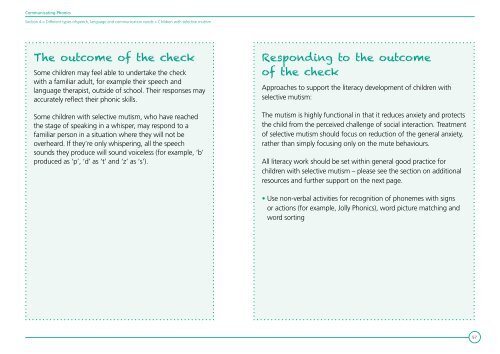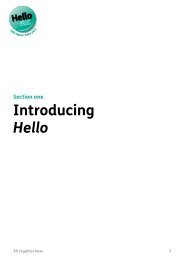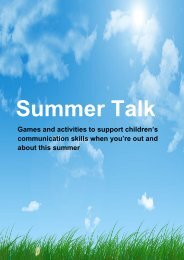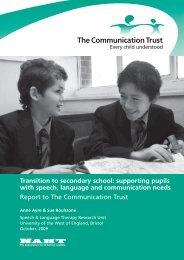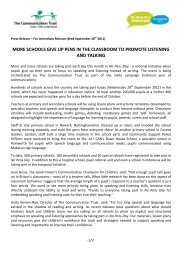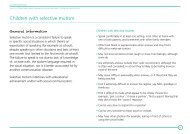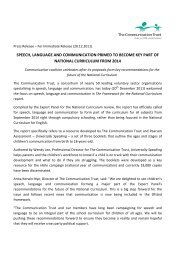Communicating Phonics - The Communication Trust
Communicating Phonics - The Communication Trust
Communicating Phonics - The Communication Trust
You also want an ePaper? Increase the reach of your titles
YUMPU automatically turns print PDFs into web optimized ePapers that Google loves.
<strong>Communicating</strong> <strong>Phonics</strong>Section 4 > Different types ofspeech, language and communication needs > Children with selective mutism<strong>The</strong> outcome of the checkSome children may feel able to undertake the checkwith a familiar adult, for example their speech andlanguage therapist, outside of school. <strong>The</strong>ir responses mayaccurately reflect their phonic skills.Some children with selective mutism, who have reachedthe stage of speaking in a whisper, may respond to afamiliar person in a situation where they will not beoverheard. If they’re only whispering, all the speechsounds they produce will sound voiceless (for example, ‘b’produced as ‘p’, ‘d’ as ‘t’ and ‘z’ as ‘s’).Responding to the outcomeof the checkApproaches to support the literacy development of children withselective mutism:<strong>The</strong> mutism is highly functional in that it reduces anxiety and protectsthe child from the perceived challenge of social interaction. Treatmentof selective mutism should focus on reduction of the general anxiety,rather than simply focusing only on the mute behaviours.All literacy work should be set within general good practice forchildren with selective mutism – please see the section on additionalresources and further support on the next page.•Use non-verbal activities for recognition of phonemes with signsor actions (for example, Jolly <strong>Phonics</strong>), word picture matching andword sorting57


